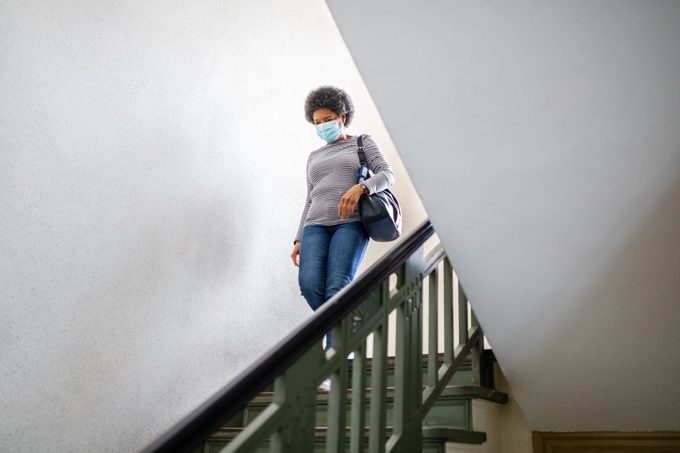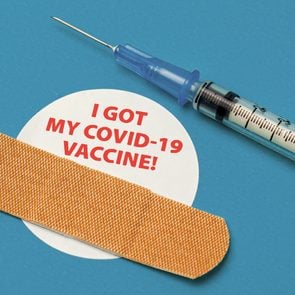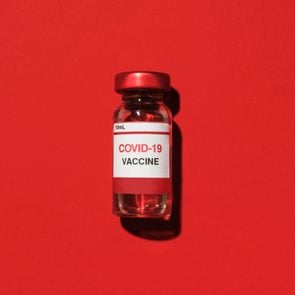When Can We Stop Wearing Face Masks? Experts Weigh In
Updated: May 19, 2021
Eased mask restrictions depend on your vaccination status, but it may still be a while before you can stop wearing a mask completely.
Good news if you’re fully vaccinated
Yesterday, U.S. health officials took another step in easing the Covid-19 mask guidelines, which have dominated lives for over a year. Fully vaccinated people can now do almost anything outdoors or indoors without a mask with the blessing of the Centers for Disease Control and Prevention (CDC).
This is the fourth time the CDC has incrementally loosened recommendations for fully vaccinated people, and more relaxation is likely to come.
“As more people get vaccinated, we will come up with further updates,” said CDC director Rochelle Walensky, MD, in an April 27 news conference.
What’s changed: Outdoors
There are no changes in the guidelines for unvaccinated or partially vaccinated people.
Fully vaccinated people, though, can now safely do most things outside without a mask. That includes dining at an outdoor restaurant with friends from several households.
A reminder: you’re considered fully vaccinated two weeks after the one-dose Johnson & Johnson vaccine or two weeks after your second dose of the two-dose Pfizer or Moderna vaccine.
“If you’re walking down the road past another person with no mask, the risk is really minimal, whether you’re vaccinated or unvaccinated, ” says Robert Glatter, MD, an emergency physician with Lenox Hill Hospital in New York City.
The CDC says that outdoor activities pose minimal risk to fully vaccinated people. You can resume activities without wearing a mask or staying six feet apart outdoors, unless required by federal, state, local, or workplace rules or regulations.
(Here are eight real-life Covid-19 vaccine stories.)
What’s changed: Indoors
There are no changes if you’re unvaccinated or partially vaccinated.
For those who are fully vaccinated, the updated guidelines indicate it’s safe to return indoor activities without a mask.
That means it’s safe to go to the hairdresser, worship events, the movies, or an indoor exercise class.
“In effect, the CDC is approving what’s already been happening,” says William Schaffner, MD, an infectious diseases specialist at Vanderbilt University Medical Center in Nashville.
(Here’s why you should hold on to your Covid-19 vaccine card.)
“Everyone I know who’s been vaccinated, we’ve all been to the barber,” he says. “The CDC is endorsing many behaviors that they didn’t before, but they’re always a little behind what’s happening out there in the world.”
The difference now is that fully vaccinated people can resume these indoor activities without wearing a mask or staying six feet apart. (Again, unless otherwise required by federal, state, local, or workplace rules or regulations.)
If you’re in a small or medium gathering with unvaccinated people, especially if they’re at high risk of severe disease, you should still wear a mask. Any indoor activity is less risky when there’s more ventilation and more space between people.
Vaccinations are slowing down the virus
The biggest factor driving the loosening restrictions is that more and more people are getting vaccinated.
Almost 35 percent of the U.S. population and 45 percent of those 18 years and older are fully vaccinated, according to the CDC’s Covid Data Tracker. The tracker also indicates that 42 percent of teens 12 years and older are also fully vaccinated.
This has dramatically slowed transmission of the virus, down 89 percent from a January 8 peak. Which, of course, is the whole point of widespread vaccinations.
Another reason for the change in restrictions is more information about how the virus is transmitted.
“The data, for the most part, tells us that the virus spreads indoors and there’s minimal transmission outdoors other than in limited or particular situations,” says Dr. Glatter.

Rolling back the restrictions
The recent updates should be just the beginning of a phased rollback of restrictions.
“As vaccination rates continue to creep up, the idea is that we’ll have indoor mandates start to gradually dissipate, but we’re not there yet,” says Dr. Glatter. “Going to large indoor events unmasked may take a year. We don’t know the timing.”
One thing seems to be clear: the changes are going to be incremental. “These are the first sensible steps,” says Dr. Schaffner.
When will you be able to skip the mask entirely?
That depends on how many people get vaccinated. Unfortunately, the pace is already abating.
“The goal was if we get to 80 percent of adults vaccinated, we would be at the point that transmission would be so low that essentially we could all go around unmasked, with the exception of those with really serious underlying illness,” says Dr. Schaffner.
That’s the concept of herd immunity. So many people are vaccinated that the virus can’t find another person to infect, so the transmission rate slowly does down, though it doesn’t die out.
The news on this front is not great. A recent CBS News poll found that six in 10 Americans say they will get a vaccine or are already on their way to full vaccination. But 18 percent are undecided and 22 percent just flat out refuse.
“We have to make a dent in that number,” says Dr. Glatter.
Reasons to keep your mask handy
The CDC says wearing a mask is still a requirement on public transportation including planes, buses, and trains, to, from, or within the United States.
And fully vaccinated people should continue wearing masks in correctional facilities and homeless shelters, per the CDC.
Remember face masks have benefits beyond protecting you and others from Covid-19.
“The incidence of allergies was significantly decreased with wearing masks,” says Dr. Glatter. This year’s flu season was also very mild.
It may also depend on demographics, like age.
“Older people, for sure, are going to hold their masks close,” says Dr. Glatter. “Younger people want no more of this.”
People who are vulnerable to serious infection, like those with heart disease or diabetes, may also hold on to those (by now) well-worn masks, he adds.
Get vaccinated
The final message here is to get a vaccine, any vaccine, and soon. The Pfizer-BioNTech and Moderna vaccines are each 95 percent effective, while the Johnson & Johnson vaccine is less effective at preventing symptomatic infections but 100 percent effective at preventing hospitalizations and death.
“The more people who are vaccinated, the more steps we can take,” Dr. Walensky said at the news conference.
Next, learn the Covid-19 vaccine myths no one should fall for.



